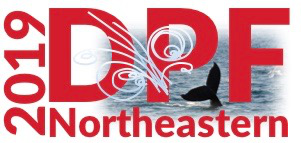Speaker
Description
The future PANDA experiment at the Facility for Antiproton and Ion Research (FAIR) in Darmstadt (Germany) is a fixed-target experiment for collisions of antiprotons with a proton target up to a beam momentum of 15 GeV/c and designed to address a large number of open questions in the hadron physics sector. In order to guarantee an excellent Particle Identification (PID) for charged hadrons in the polar angle range between $5^\circ$ and $22^\circ$, a new type of Cherenkov detector has been developed for the forward endcap of the PANDA target spectrometer. It is based on the principle of Detection of Internally Reflected Cherenkov Light (DIRC) and therefore called Endcap Disc DIRC (EDD). The desired separation power of at least 3 standard deviations for the separation of $\pi^\pm$ and $K^\pm$ up to particle momenta of 4 GeV/c was determined with simulation studies and validated during various testbeam campaigns at CERN and DESY.
The EDD consists of four independent radiator quadrants, made of synthetic fused silica, and uses the principle of internal reflection to propagate the created Cherenkov photons to the outer rim where they enter one of 96 Readout Modules (ROMs) which are glued to the radiator. The surfaces of each quadrant are highly polished in order to reduce possible photon losses and to conserve the Cherenkov angle during the reflections at the surface. After focusing the captured photons to the photocathode of attached Multichannel Plate Photomultiplier Tubes (MCP-PMTs), the Cherenkov angle can be calculated from the hit position and time information with dedicated, fast reconstruction algorithms. Additionally, the trajectory information of the charged particle has to be taken into account.
This talk will cover the detector instrumentation and the designed framework for the detector simulation and reconstruction. Furthermore, the simulation results, used to optimize the detector performance, and the latest testbeam analysis for validating these results will be presented. The PID performance has been evaluated by simulating the specific decay channel $\bar p p \rightarrow f_0\pi^0 \rightarrow \pi^+ \pi^- \pi^0$ including the glueball candidate $f_0(1500)$. In addition to that, a prototype for an online event reconstruction on a Virtex-4 FPGA card has been develeoped and will be introduced in this talk.
